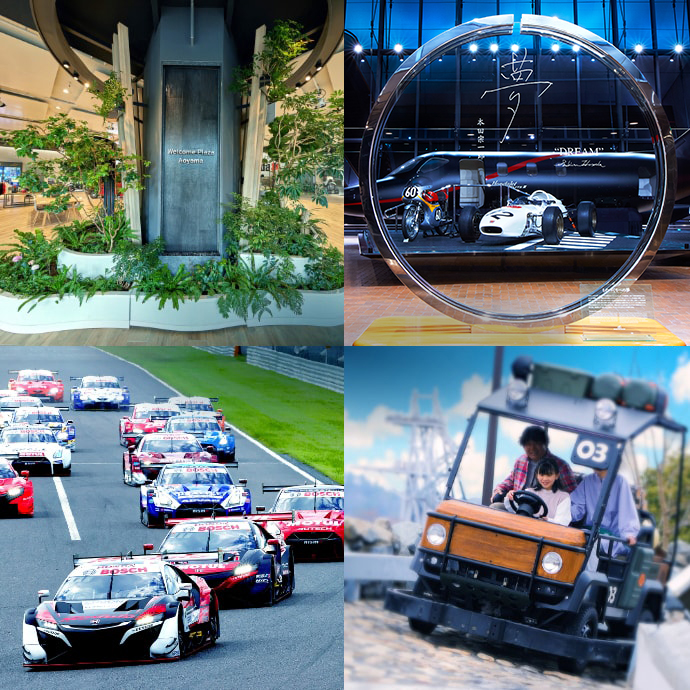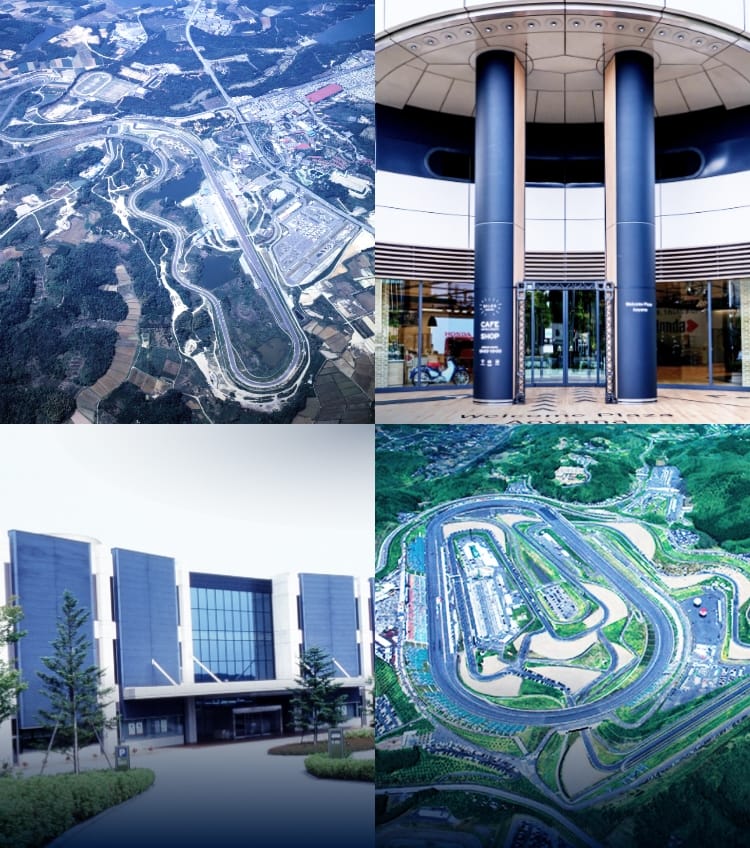
Ideas Behind Honda Facilities
Explore what Honda had in mind when each facility was established
1962 Suzuka Circuit
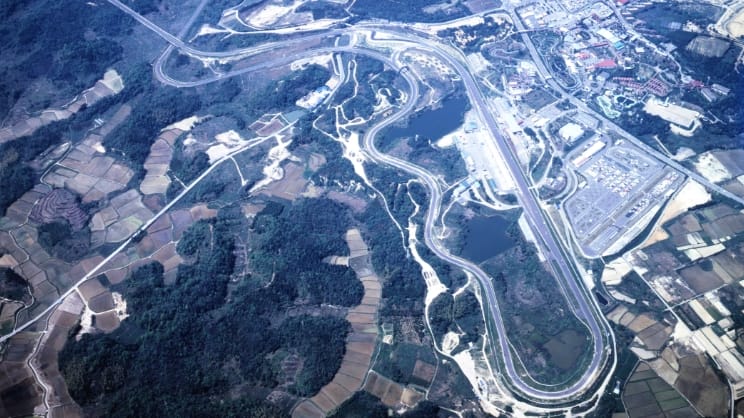
Scene during construction
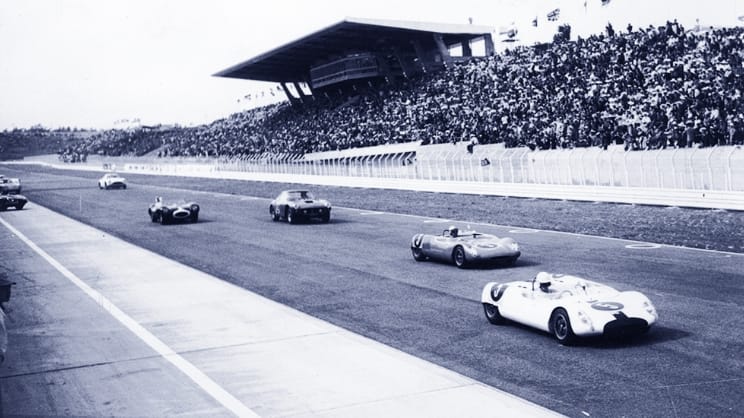
The Suzuka Circuit is completed
The Suzuka Circuit today
Opened on September 20, 1962, the Suzuka Circuit was influenced by the thoughts of Honda's key people. Honda's founder Soichiro Honda believed that our cars wouldn't improve unless they were raced. Honda's right-hand man and supporter of Honda's development, Takeo Fujisawa, envisioned a car-themed amusement park where visitors operate the rides themselves.
Since Japan lacked expert knowledge in circuit construction at the time, several rough drafts were created based on materials from overseas. Construction of the circuit was initially planned in an area filled with rice paddies, but based on the founder's belief that fields that produce precious rice must not be destroyed, the course was designed to avoid these areas. Then in September 1962, Japan's first fully-fledged racing circuit meeting the requirements of world-class racing was completed.
In the years since, the circuit has championed the development of the automotive industry through various races, including the Suzuka 8 Hours Endurance Race and the Japanese F1 Grand Prix.
At the Suzuka Circuit Park, Honda developed rides based on the concepts of "the joy of driving" and "families working together." This is in line with the hope that the facility will be an opportunity for children to experience and enjoy motorsports.
In September 1964, at the request of Japan's National Police Agency, Honda began providing instruction on driving skills for police motorcycles and patrol cars in connection with the opening of the Meishin Expressway. In response to improved vehicle performance appropriate for the age of high-speed motorways, a place for drivers to improve their driving skills was also needed. To address this, Honda began offering safe driving training sessions to regular companies and government entities. The training sessions would later develop into Traffic Education Centers that Honda operates today.
1985 Head Office Building and Welcome Plaza
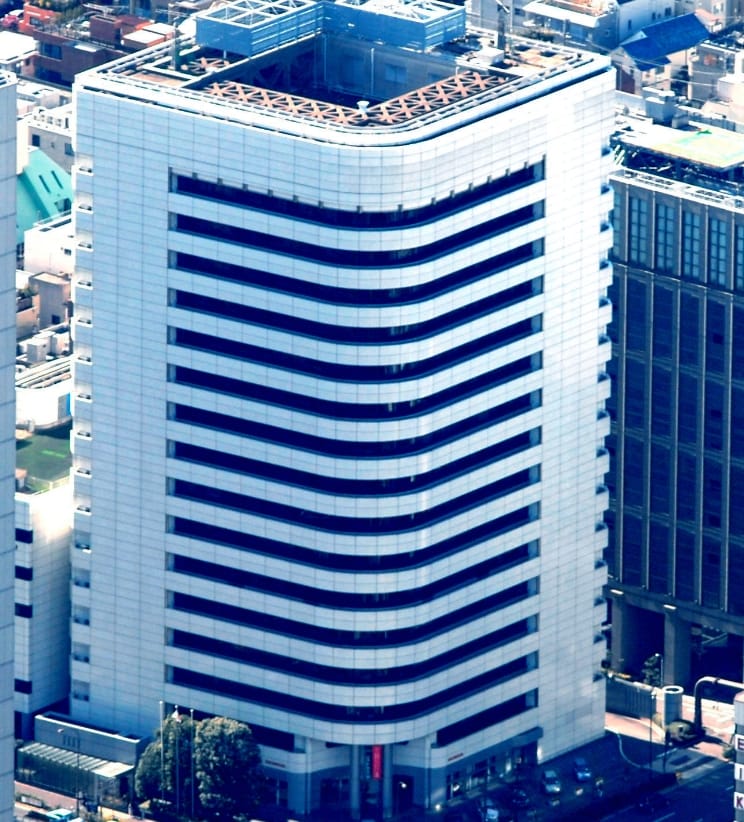
The head office at the time of completion
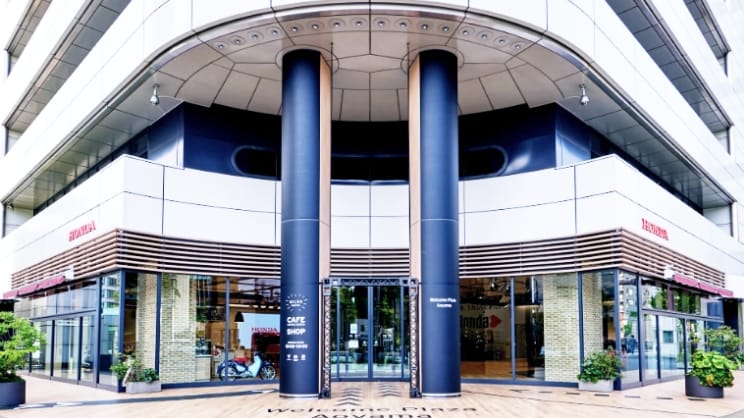
Welcome Plaza Aoyama
Honda Welcome Plaza Aoyama
Welcome Plaza Aoyama is a showroom on the first floor of the Aoyama Building and opened on August 19, 1985, as a place where anyone can stop by and relax.
Honda's founder Soichiro Honda said he wanted it to be the kind of place where "a soba delivery man could stop by in between deliveries." Keeping with that sentiment, it was named a "welcome plaza" instead of a "showroom." Today, Honda engages in activities that convey these sentiments through exhibitions and events.
Honda's sentiment conveyed from outside the Aoyama Building
45-degree corner entrance
Aiming to make the Aoyama Building an open and welcoming head office, spaces on the first floor have been designed to allow people to freely come and go.
The main entrance is designed to be open, facing the corner at a 45-degree angle so that the view of the intersection is not obstructed.
The reason for the two-pillar design
The two large pillars at the main entrance are curiously shaped as two semi-cylinders facing inward.
The pillars were originally round, but at the time, round pillars gave a strong authoritative impression. At Soichiro's request, they were hastily cut to produce their current design.
Community engagement initiatives
Buildings in harmony with towns (security and disaster preparedness)
HondaWoods, which lights up at night for community security and to showcase its landscaping, is mainly planted with wild grasses and flowers so that people can experience the four seasons even amid a group of buildings. The trees are also adorned with birdhouses created by Honda designers and local children, providing a healing sight to onlookers.HondaWoods initiatives to develop forests that forge links with local residents have been developed at Honda facilities around Japan.
「Based on the idea of "no safety, no production," the corner of Honda's Aoyama Building that faces the intersection was designed with a rounded shape to improve visibility for the heavy vehicular and pedestrian traffic of the Aoyama 1-chome area. As a result, the building is constructed further back than its property line.Additionally, to prevent broken glass from falling to the ground below and posing a risk to passersby in the event of an earthquake, all windows on the side where people pass feature safety measures, including being enclosed by 1.5-meter-wide balconies.
Soichiro's water
Soichiro's water is offered free of charge, based on Soichiro's desire to make the building a place where anyone can feel free to stop by.Soichiro's water has been mellowed by using water from large Canadian cypress barrels on the 3rd basement floor. It is used in brewing the café's coffee and also serves as drinking water in times of disaster.
1997
Mobility Resort Motegi
(formerly Twin Ring Motegi)
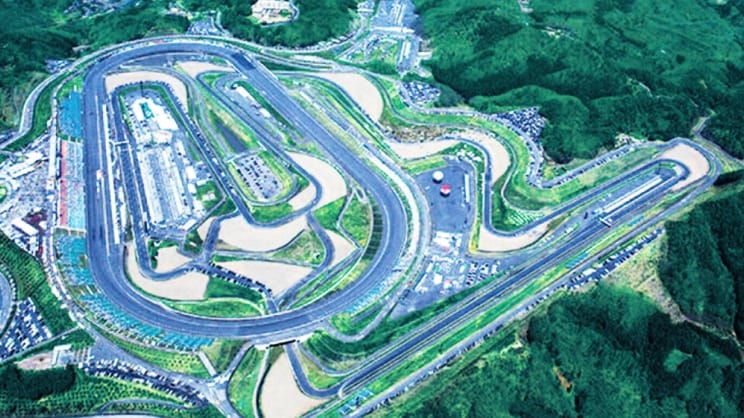
Scene during construction
Video introducing Mobility Resort Motegi
Based on the theme of "fusion between people, nature and mobility," Twin Ring Motegi was established as a place for people to experience the joy of driving in fun ways, with a focus on proposing a new motorsports culture and promoting the spread of traffic safety.
The Motegi Development Project was started in 1988 out of a desire to help improve people's lives and culture by providing the location and opportunities for anyone to experience the fun of recreation and motorsports while learning about traffic safety and acquiring scientific knowledge and skills, all while surrounded by nature. In 1994 the facility was officially named Twin Ring Motegi, and construction started.
During construction of the facility, detailed surveys of the site were conducted to ensure that the long-established environment was preserved as much as possible. The ecology of the plants, insects, birds and fish in the area was also ascertained, with preservation efforts taking place in parallel with construction.
Measures to prevent embankments from sinking, earthwork management systems, 3D CAD-based design and other groundbreaking construction methods using manmade satellites were employed, and the completed facility opened in August 1997.
To mark its 25th anniversary and reflect a theme of even greater co-existence between people, nature and mobility, in March 2022 the facility was renamed to Mobility Resort Motegi. The circuit located inside the facility hosts Japan's only races for MotoGP™, the world's most prestigious motorcycle racing series, and Trial World Championship, in addition to the popular SUPER GT category of car races, among other events.
1998 Honda Collection Hall
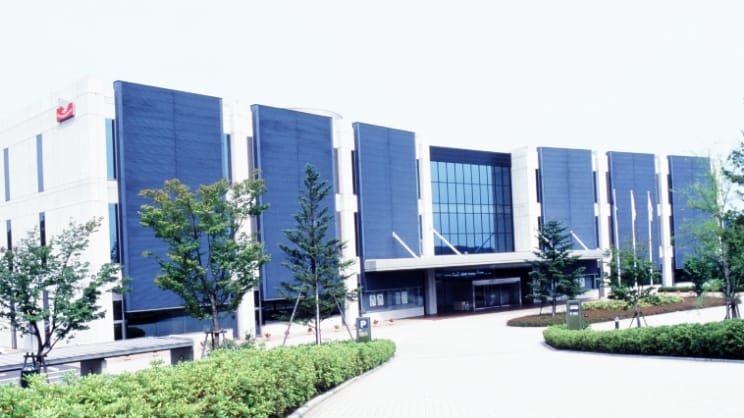
Honda Collection Hall at completion
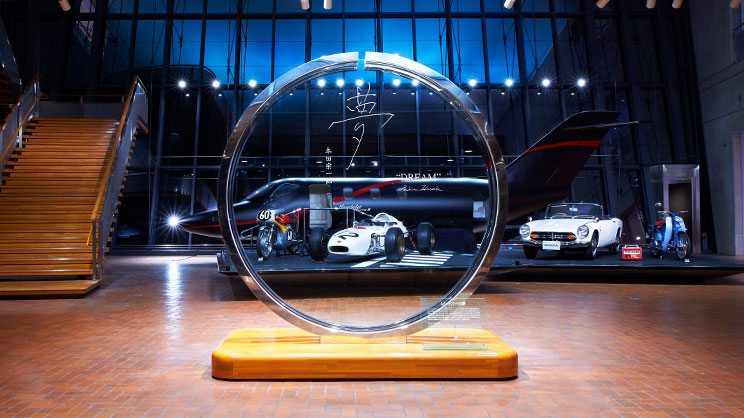
Honda Collection Hall after renewal
A History of Dreams and Challenges - The Honda Collection Hall, established in 1998 to commemorate the 50th anniversary of Honda’s founding, was completely renovated in 2024 as a facility to pass on Honda’s unchanging philosophy.
This exhibition is divided into 4 zones on 4 separate floors, each representing a specific era of Honda’s products from the past, such as bicycle auxiliary engines, to motorcycles, automobiles, power products, robots, and products for the future, such as light jets and next-generation mobility. The story that unfolds may not seem spectacular, but is instead a history of challenges that Honda has faced, overcoming numerous obstacles, persistently moving toward its dreams. Visitors can relive these stories of “Dreams and Challenges” by following the route guiding them to each exhibit.
The Honda Collection Hall was established so that visitors can see, hear, and experience carefully selected Honda products, feel the passion that flows through this story, and be empowered to move toward their dreams.
* Audio guide available for visitors with smartphones and headphones/earphones, providing a deeper insight while enjoying the exhibits.
